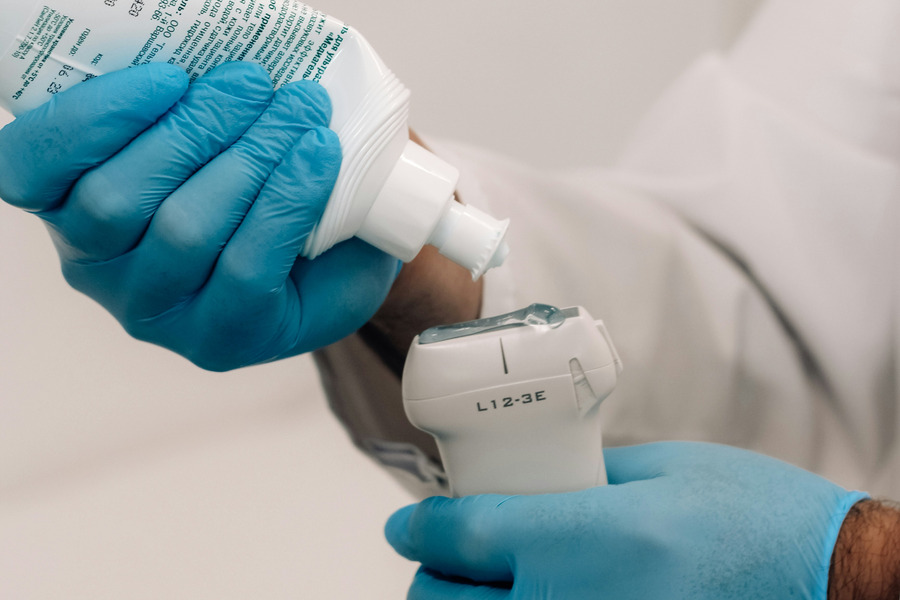Understanding Ultrasound in Women’s Health: A Complete Guide
Ultrasound is one of the most essential and widely used tools in obstetrics and gynecology. Whether you’re expecting a baby or experiencing gynecological symptoms, ultrasound offers a safe, non-invasive way to see what’s happening inside the body in real time.
In this guide, we’ll cover everything you need to know about ultrasound in women’s health—how it works, why it’s used, what to expect, and how it supports accurate diagnosis and care.
What Is an Ultrasound?
An ultrasound scan (also called a sonogram) uses high-frequency sound waves to create live images of the organs, tissues, and structures inside the body. It does not use radiation, making it safe for both pregnant individuals and non-pregnant patients.
In gynecology and obstetrics, ultrasound is used to:
-
Confirm and monitor pregnancy
-
Diagnose reproductive system conditions
-
Evaluate symptoms like pelvic pain or abnormal bleeding
-
Guide certain procedures, such as egg retrieval or biopsies
Types of Ultrasound in OB-GYN Care
There are several types of ultrasound used in women’s health, each designed to provide specific insights depending on the condition or stage of pregnancy:
1. Transabdominal Ultrasound
-
A handheld device (transducer) moves across the abdomen.
-
Often used during pregnancy or to assess pelvic organs externally.
-
A full bladder may be required to improve image clarity.
2. Transvaginal Ultrasound
-
A slender probe is gently inserted into the vagina.
-
Provides high-resolution images of the uterus, ovaries, and other pelvic structures.
-
Common in early pregnancy or for evaluating gynecological concerns.
3. 3D and 4D Ultrasound
-
3D ultrasound creates three-dimensional still images.
-
4D ultrasound shows real-time motion (e.g., baby movements or facial expressions).
-
Often used in prenatal imaging to enhance the bonding experience.
4. Doppler Ultrasound
-
Assesses blood flow in blood vessels, including those in the uterus and umbilical cord.
-
Helps evaluate fetal circulation and detect conditions like intrauterine growth restriction.
Reasons for an Ultrasound
Ultrasound is a valuable diagnostic and monitoring tool. Common reasons include:
During Pregnancy:
-
Confirm pregnancy and determine gestational age
-
Monitor fetal growth and development
-
Check for multiple pregnancies (e.g., twins)
-
Evaluate the position of the baby and placenta
-
Measure amniotic fluid levels
-
Detect fetal anomalies or complications
For Gynecologic Care:
-
Investigate causes of pelvic pain, irregular periods, or abnormal bleeding
-
Diagnose conditions such as fibroids, ovarian cysts, or endometriosis
-
Assess fertility concerns or monitor ovulation
-
Guide intrauterine device (IUD) placement or biopsies
What to Expect During an Ultrasound
Ultrasound procedures are typically simple, safe, and completed within 15–30 minutes. Here’s what to expect:
Preparation:
-
Transabdominal: You may be asked to drink water beforehand to fill your bladder.
-
Transvaginal: No special preparation is usually needed, and an empty bladder is often preferred.
During the Procedure:
-
You’ll lie comfortably on an exam table.
-
A special gel is applied to the skin (or transducer) to help conduct the sound waves.
-
The technician moves the transducer over the targeted area while real-time images appear on a monitor.
-
A healthcare provider will review and explain the results.
Ultrasound is non-invasive and does not cause pain, though transvaginal exams may involve slight pressure or discomfort.
Is Ultrasound Safe?
Yes. Ultrasound is widely regarded as very safe when performed by trained professionals. Unlike X-rays, it does not use ionizing radiation, making it a preferred imaging option for pregnant individuals and for frequent monitoring in gynecology.
The benefits of accurate, real-time imaging far outweigh the minimal risks, especially when used to guide diagnosis and treatment.
Frequently Asked Questions
How early can pregnancy be detected by ultrasound?
A transvaginal ultrasound can detect a gestational sac around 5 weeks of pregnancy and a heartbeat by 6 to 7 weeks.
Can ultrasound detect all gynecological conditions?
Ultrasound can identify many common issues—like fibroids, cysts, and abnormal uterine structures—but may be used alongside other imaging or diagnostic tests for a full evaluation.
Are ultrasound results immediate?
Yes, images are visible in real time, though a full interpretation may be provided after a doctor reviews the scan.
Supporting Women’s Health Through Every Stage
Ultrasound is a cornerstone of reproductive and gynecologic care. Whether it’s part of a prenatal checkup or a diagnostic evaluation for pelvic symptoms, this imaging tool helps ensure accurate diagnosis, timely intervention, and peace of mind.
If you are scheduled for an ultrasound or think you may need one, rest assured it’s a safe, effective step in supporting your health and wellness.







